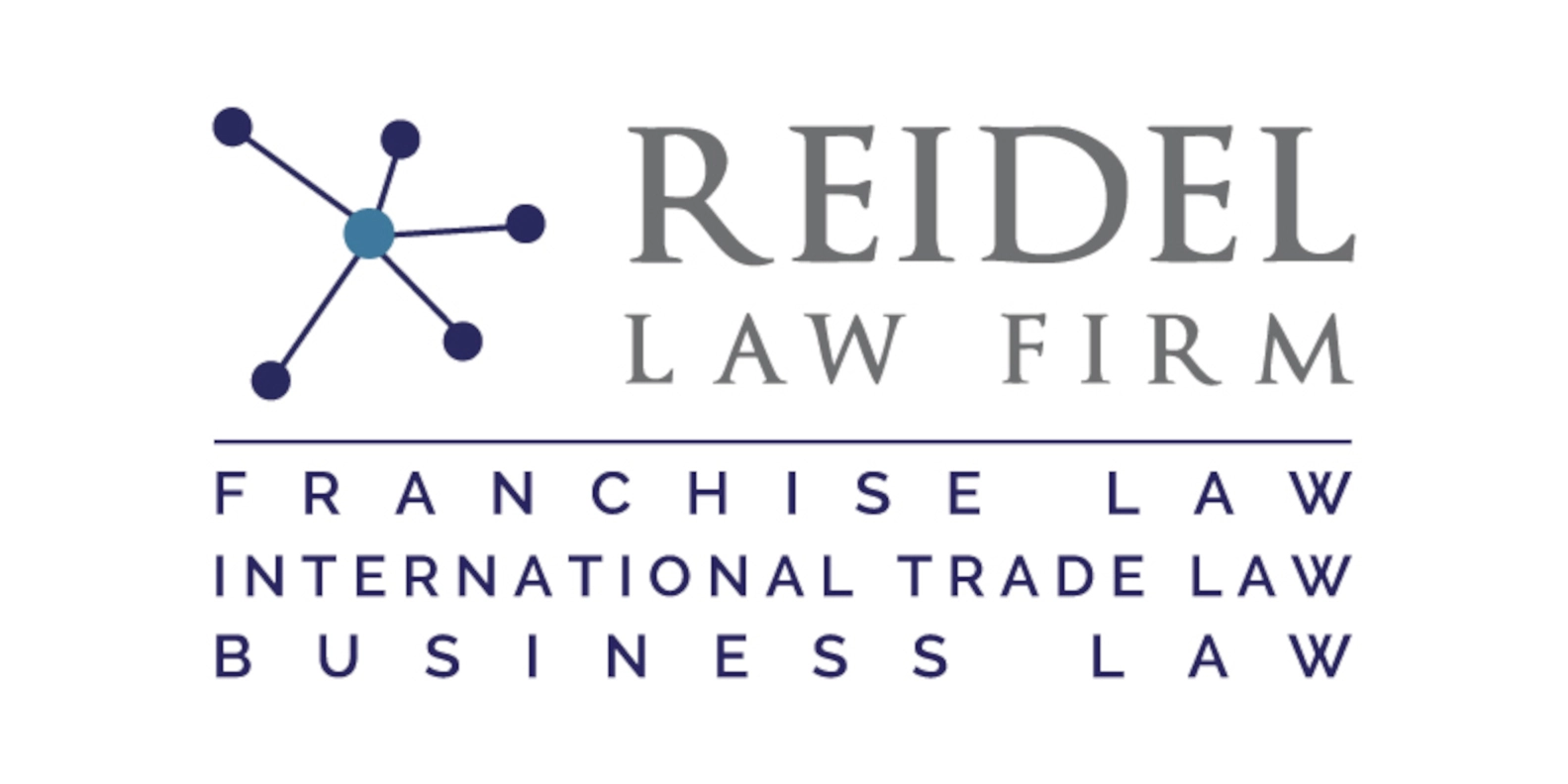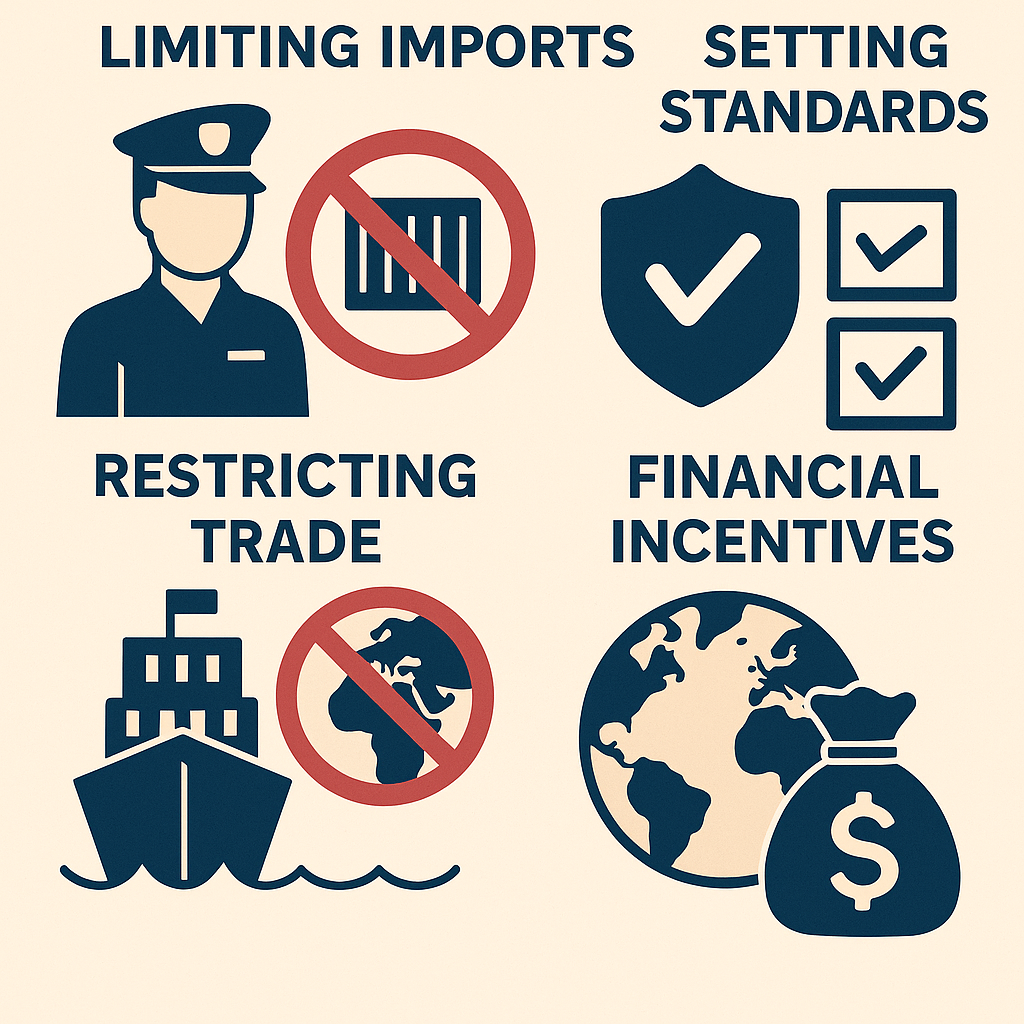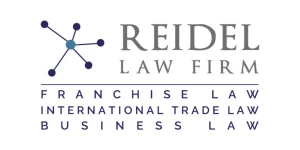In today’s globalized business environment, ensuring compliance with trade regulations and maintaining regulatory compliance has become more critical than ever. Non-compliance can result in severe consequences, such as financial penalties, reputational damage, financial loss, and even legal actions. To effectively monitor and measure trade compliance performance, businesses rely on Key Performance Indicators (KPIs). Essential compliance KPIs are the core metrics organizations use to establish, measure, and refine their compliance programs, guiding controls, policies, and operational performance. These performance metrics provide valuable insights into various aspects of trade compliance, enabling organizations to identify areas for improvement and drive business success.
Understanding Trade Compliance Key Performance Indicators (KPIs)
Trade Compliance Key Performance Indicators (KPIs) are measurable values that reflect an organization’s performance in meeting trade regulations and requirements. These indicators enable businesses to monitor their compliance efforts and gauge their effectiveness in minimizing risks associated with international trade.
An effective trade compliance KPIs framework should include a well-defined set of metrics that align with the organization’s goals and objectives. Each KPI is a metric used to quantitatively measure compliance performance. These metrics should cover various dimensions of trade compliance, such as import and export documentation accuracy, customs clearance time, adherence to trade agreements, and risk assessment.
These dimensions should also address compliance with internal and external policies to ensure comprehensive risk management and continuous improvement.
Import and export documentation accuracy is a crucial aspect of trade compliance. It involves ensuring that all necessary documents, such as invoices, packing lists, and certificates of origin, are accurately completed and submitted to the relevant authorities. Accurate documentation helps prevent delays in customs clearance and reduces the risk of penalties or fines.
Customs clearance time is another important trade compliance KPI. It measures the efficiency of the customs clearance process, which involves verifying and approving imported or exported goods. A shorter clearance time indicates that the organization is effectively managing its trade compliance obligations and minimizing potential disruptions to its supply chain.
When tracking progress, it is essential to measure KPIs over a set period to ensure accurate benchmarking and analysis.
When deciding which KPIs to include, organizations should prioritize the important compliance KPIs and most important compliance KPIs that are most relevant to their operations and risk profile.
The Importance of Trade Compliance in Business Operations
Trade compliance plays a vital role in business operations, especially for organizations engaged in international trade. By ensuring compliance with regulations, businesses can maintain competitive advantages, build trust with customers and trading partners, and avoid penalties and disruptions to their supply chains.
Moreover, trade compliance impacts multiple facets of business operations, including logistics, finance, legal, and risk management. It requires collaboration and coordination across departments to navigate the complex landscape of trade regulations and fulfill obligations imposed by various authorities. Optimizing business processes is essential for effective compliance management, as streamlined workflows help organizations assess risks, maintain compliance, and improve overall performance.
Aligning trade compliance with the organization’s strategic goals ensures that compliance efforts support overall business success.
Setting Up a Trade Compliance Framework
Establishing a robust trade compliance framework is the foundation for managing compliance risks and ensuring your organization meets all regulatory requirements and industry standards. A well-designed framework enables compliance officers to systematically identify, assess, and mitigate potential compliance issues before they escalate into costly fines or reputational damage.
Key elements of an effective compliance program include the development and regular review of compliance policies, both internal and external, to ensure alignment with current business goals and regulatory requirements. Incorporating compliance metrics and key performance indicators (KPIs) allows organizations to measure compliance performance and track progress over time. Regular internal audits and compliance training sessions are essential for keeping staff informed and prepared to handle compliance challenges, while also reinforcing a culture of accountability.
By integrating these components, organizations can proactively address non-compliance, streamline processes, and adapt to evolving industry standards. Ultimately, a comprehensive trade compliance framework not only helps organizations stay compliant but also supports operational efficiency and long-term business success.
How Trade Compliance KPIs Can Drive Business Success
Trade compliance KPIs serve as invaluable tools for driving business success. By monitoring and measuring performance against these metrics, organizations can identify areas of non-compliance or inefficiencies and take corrective actions promptly. This proactive approach allows businesses to minimize risks by identifying and addressing potential risks through KPI monitoring, including compliance risk as a specific type of risk that KPIs help organizations manage. As a result, companies can optimize trade operations and enhance overall supply chain performance.
Creating an Effective Trade Compliance KPIs Cheatsheet
Developing an effective trade compliance KPIs cheatsheet requires careful consideration of the organization’s specific requirements and objectives. The cheatsheet should encompass a comprehensive set of metrics relevant to the business’s trade operations and compliance goals.
When creating a trade compliance KPIs cheatsheet, organizations should involve key stakeholders, including trade compliance experts, legal counsel, logistics professionals, and IT specialists. In addition to stakeholder input, it is important to consider other factors such as historical data, industry standards, and team dynamics when developing the cheatsheet. Evaluating compliance initiatives and their associated costs and resource requirements can help ensure the cheatsheet supports efficient compliance strategies, such as automation and workflow improvements. This collaborative effort ensures that the cheatsheet reflects a holistic understanding of the business’s compliance needs and aligns with industry best practices.
Essential Metrics to Include in Your Trade Compliance KPIs Cheatsheet
When developing a trade compliance KPIs cheatsheet, it is crucial to include essential metrics that capture the most critical aspects of trade compliance. These metrics may vary depending on the industry, business model, and geographic scope of operations. However, some common metrics that organizations may consider incorporating into their cheatsheets include:
- The accuracy rate of import/export documentation
- Customs clearance time
- Level of adherence to trade agreements and regulatory requirements
- Number and severity of compliance incidents
- Number of compliance issues identified and average resolution time for each compliance issue
- Monitoring of regulatory compliance issues, including their impact on HR regulatory compliance expenses and employee retention
- Percentage of shipments audited or investigated
- Level of risk assessment and mitigation
Industry Best Practices for Developing Trade Compliance KPIs
Developing effective trade compliance KPIs requires adherence to industry best practices. These practices can guide organizations in formulating meaningful metrics that capture the nuances and complexities of trade compliance.
One best practice is to ensure that KPIs are SMART—Specific, Measurable, Achievable, Relevant, and Time-bound. SMART KPIs provide clarity and focus, making them more actionable and facilitating performance evaluation.
It is also important to establish and measure KPIs related to internal controls, as these are essential for supporting effective compliance management and ensuring adherence to both industry regulations and internal policies.
Another best practice is to establish a baseline for KPIs and set realistic targets for improvement. Understanding the current state of compliance performance and defining achievable goals helps organizations track progress and identify areas for enhancement.
Auditing and Resolving Trade Compliance Issues
Regular auditing and prompt resolution of trade compliance issues are vital to maintaining an effective compliance program. Through comprehensive compliance audits, organizations can uncover areas of non-compliance and gain actionable insights into their compliance function. Compliance officers and the broader compliance team play a crucial role in tracking key risk indicators, such as the number of compliance issues identified, the average time to issue discovery, and the speed of issue resolution.
Monitoring these compliance metrics helps organizations evaluate the effectiveness of their compliance efforts and identify underlying causes of non-compliance. Timely corrective actions, informed by audit findings, are essential to minimize risk exposure and prevent compliance related lawsuits. Additionally, tracking post audit issues outstanding provides a clear picture of unresolved risks and helps prioritize resources for maximum efficiency.
Ongoing internal audits completed and regular compliance training sessions further strengthen the compliance program by equipping employees with the knowledge needed to recognize and address compliance issues. By making auditing and issue resolution a continuous process, organizations can transform compliance from a reactive obligation into a strategic advantage, ensuring they stay compliant and resilient in a rapidly evolving regulatory environment.
Key Challenges in Monitoring and Measuring Trade Compliance KPIs
While trade compliance KPIs offer valuable insights, organizations often encounter challenges in monitoring and measuring these metrics effectively. Some common challenges include:
- Availability and accuracy of data: Obtaining timely and accurate data for KPI measurement can be challenging, especially when multiple systems and stakeholders are involved.
- Complexity of trade regulations: Trade regulations are dynamic and complex, making it difficult to develop KPIs that adequately capture all compliance requirements.
- Integration of systems and processes: Trade compliance processes often span multiple systems and departments. Integrating these systems and aligning processes can be a challenge in establishing seamless KPI measurement.
Tips for Setting Realistic and Achievable Trade Compliance KPIs
To set realistic and achievable trade compliance KPIs, organizations should follow these tips:
- Align KPIs with business objectives: KPIs should reflect the organization’s overall goals and objectives, ensuring that compliance efforts contribute to the business’s success.
- Involve relevant stakeholders: Engaging key stakeholders, including trade compliance experts, legal counsel, and operations personnel, ensures the KPIs are comprehensive, credible, and actionable.
- Regularly review and update KPIs: Trade compliance requirements evolve, and so should the KPIs. Regularly reviewing and updating the KPIs keeps them relevant and aligned with changing regulations and business needs.
Analyzing the Impact of Trade Compliance KPIs on Supply Chain Efficiency
Effective trade compliance KPIs can significantly impact supply chain efficiency. By identifying bottlenecks and non-compliance areas, organizations can streamline their trade operations, reduce delays, minimize costs, and enhance overall supply chain productivity.
Moreover, the analysis of trade compliance KPIs allows organizations to identify process improvements, implement automation and digitization initiatives, and leverage technology solutions for enhanced efficiency and risk management. Conducting due diligence is essential to assess and streamline compliance processes, as it helps identify resource-intensive controls and target them for improvement through automation and workflow tools.
Leveraging Technology to Streamline Trade Compliance Monitoring and Reporting
Technology plays a key role in streamlining trade compliance monitoring and reporting. Advanced software solutions enable automated data collection, analysis, and reporting, reducing manual efforts and improving accuracy and efficiency.
Organizations can leverage technology tools such as trade management systems, customs compliance software, and data analytics platforms to centralize trade compliance data, track KPIs in real-time, generate accurate reports, and facilitate compliance audits.
Case Studies: Successful Implementation of Trade Compliance KPIs in Different Industries
Several industries have successfully implemented trade compliance KPIs, achieving significant improvements in compliance performance and overall business success.
For instance, in the automotive industry, a leading manufacturer implemented KPIs to monitor import and export documentation accuracy, resulting in a 30% reduction in documentation errors and faster customs clearance, leading to improved supply chain efficiency.
In the pharmaceutical sector, a multinational pharmaceutical company implemented KPIs to measure compliance with drug import/export regulations. This initiative enabled the company to proactively address compliance risks, improve audit readiness, and maintain product quality and safety.
Common Mistakes to Avoid when Developing a Trade Compliance KPIs Cheatsheet
Developing a trade compliance KPIs cheatsheet requires careful attention to detail to ensure its effectiveness. Avoiding common mistakes can contribute to the cheatsheet’s credibility and relevance. Some mistakes to avoid include:
- Using generic or irrelevant metrics: KPIs should be tailored to the business’s specific trade compliance needs and should capture the most critical aspects of compliance performance.
- Overcomplicating the cheatsheet: While comprehensive, the cheatsheet should be user-friendly and easy to understand. Avoid overwhelming stakeholders with unnecessary complexities or excessive details.
- Failure to regularly review and update the cheatsheet: Trade compliance requirements evolve, and the cheatsheet should reflect these changes. Regularly review and update the cheatsheet to keep it current and aligned with changing regulations.
The Role of Training and Education in Ensuring Effective Use of Trade Compliance KPIs
Training and education are crucial for ensuring effective use of trade compliance KPIs. Organizations should invest in training programs to enhance employees’ understanding of trade regulations, compliance best practices, and the significance of KPIs in managing risk and maintaining compliance. Effective compliance programs support employee education and performance monitoring, helping to ensure that staff are well-equipped to meet regulatory requirements. Upholding ethical standards is also a key part of the organization’s compliance framework, reinforcing the importance of integrity and accountability in all compliance activities.
By providing employees with the necessary knowledge and skills, organizations can foster a culture of compliance and empower teams to actively contribute to the achievement of trade compliance KPIs.
Exploring Different Approaches for Benchmarking Trade Compliance KPIs
Benchmarking trade compliance KPIs allows organizations to compare their performance against industry peers and identify areas for improvement. Different approaches for benchmarking include:
- Internal benchmarking: Comparing performance across different business units or departments within the organization to identify best practices and highlight areas for improvement.
- External benchmarking: Analyzing industry benchmarks and performance indicators to gauge the organization’s trade compliance performance against its competitors, including comparing compliance with external policies such as industry, government, and regulatory standards.
- Cross-industry benchmarking: Comparing trade compliance KPIs with organizations operating in different industries to gain insights into innovative practices and identify opportunities for improvement.
Overcoming Data Collection and Reporting Challenges for Accurate Trade Compliance Measurements
Accurate data collection and reporting are vital for reliable trade compliance measurements. Organizations often face challenges in obtaining timely and accurate data due to multiple systems, manual processes, and data discrepancies.
To overcome these challenges, organizations can leverage technology solutions to automate data collection, integrate systems, and ensure data accuracy. Regular data quality checks and reconciliations also contribute to accurate trade compliance measurements.
Aligning Trade Compliance KPIs with Organizational Goals and Objectives
Alignment of trade compliance KPIs with organizational goals and objectives is crucial for their effective utilization and integration into the business’s overall strategy. KPIs should be directly linked to the organization’s mission, vision, and compliance strategy.
By aligning trade compliance KPIs with broader organizational goals, businesses can ensure that compliance efforts contribute to the achievement of key business objectives, such as enhancing customer satisfaction, optimizing supply chain operations, and driving sustainable growth. It is also essential to ensure compliance with all relevant regulations as part of achieving these goals. Effective compliance can positively impact employee retention by fostering a stable and trustworthy work environment.
The Future of Trade Compliance: Emerging Trends and Technologies to Watch
The field of trade compliance is continuously evolving, and organizations need to stay ahead of emerging trends and technologies. Several key trends and technologies are shaping the future of trade compliance:
- Digitalization and automation: Increasing adoption of digital platforms and automated solutions to streamline compliance processes, enhance data analytics capabilities, and improve overall efficiency.
- Artificial Intelligence (AI) and Machine Learning (ML): Leveraging AI and ML technologies to automate compliance checks, identify patterns, and proactively manage risks.
- Data analytics and predictive modeling: Utilizing advanced data analytics and predictive modeling techniques to gain real-time insights, forecast compliance risks, and optimize trade operations.
- Blockchain technology: Exploring the potential of blockchain to enhance transparency, traceability, and security in trade compliance processes, such as supply chain tracking and documentation verification.
Organizations that embrace these emerging trends and technologies and incorporate them into their trade compliance strategies will be better equipped to navigate the complexities of global trade and achieve sustainable compliance performance.
In conclusion, trade compliance KPIs play a crucial role in ensuring adherence to trade regulations and driving business success. By developing an effective trade compliance KPIs cheatsheet, organizations can monitor and measure their compliance efforts, identify areas for improvement, and optimize their trade operations. Implementing best practices, leveraging technology, and aligning KPIs with organizational goals are essential for achieving accurate trade compliance measurements and enhancing overall supply chain efficiency. Looking to the future, embracing emerging trends and technologies will enable organizations to stay at the forefront of trade compliance practices and successfully navigate the evolving regulatory landscape.







